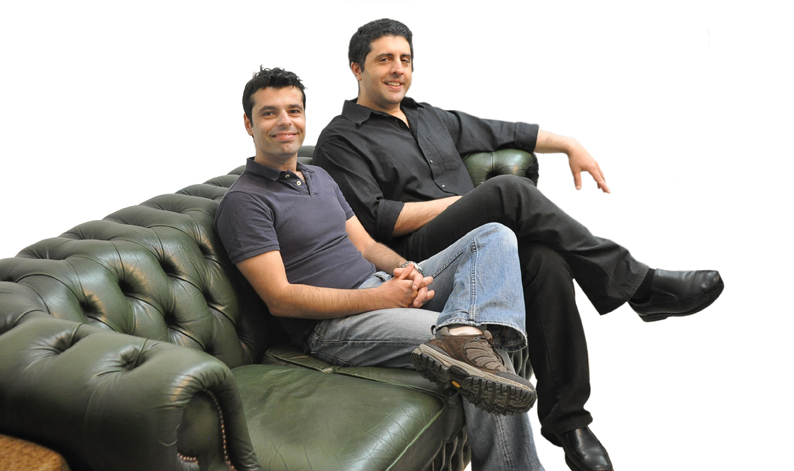The process of splitting the genes into the gametes takes place in the germ cells from which the reproductive cells are formed. In the first stage, the genetic load of the germ cells is doubled. After that, any two matching (homologous) chromosomes exchange genetic segments

A person or an animal that decides to breed is faced with a difficult choice. He can transfer to the next generation, to the future, only half of his genes (which, together with half of the genes of his partner, will once again make up a complete genetic load). In order to avoid a cruel choice - which is also ineffective from a survival point of view - a method was developed during evolution that allows the "investment" to be randomly divided into different "baskets".
In practice, this process takes place in the germ cells from which the reproductive cells are formed. In the first stage, the genetic load of the germ cells is doubled. After that, any two matching (homologous) chromosomes exchange genetic segments. The replacement is performed on the basis of as complete a match as possible of the genetic sequence between the replaced segments. This is the process of genetic exchange. Later, the double genetic load will be divided between
Four reproductive cells (sperm cells or eggs), each of which carries half the amount of genes that exists in a normal cell - in a "genetic basket" with a different and "personal" composition. In this way, evolution guarantees that offspring will be created that are to some extent similar to their parents but also different from them and have their own unique personality and traits (which may prove to be essential for survival under certain conditions). Genetic replacement is also carried out in DNA repair processes: a section in which a fault, or error, was discovered, is cut off , and a new copy is "installed" in its place, created according to the corresponding segment in the corresponding chromosome. But how exactly do compatible genetic segments "discover" each other to exchange places?
These are segments whose size (length) is about one millionth of the total length of the genome. Each replacement requires the segments to measure themselves again and again against hundreds of thousands of segments, until the one segment is found whose genetic sequence fully matches theirs.
Dr. Zvi Telusti and research student Yonatan Sabir, from the Department of Physics of Complex Systems at the Weizmann Institute of Science, examined this process with physical tools. Their research findings were recently published in the scientific journal Molecular Cell. "It is known that during the replacement phase the DNA segment is stretched by 50% on average," says Dr. Telusti. "The protein called RecA is responsible for stretching, and it and its like exist throughout the animal world."
The scientists studied the stretching phenomenon in order to understand if it is an essential step during the exchange, or if it is just some kind of side effect. The question mark intensified in view of the fact that the stretching process consumes considerable energy, and makes it difficult for the process of locating the corresponding segment and the organization of the genetic material in its known helical structure.
In their research, the scientists used a basic model known from everyday life - profit and loss. For example, when a certain genetic segment measures itself against a candidate segment, it can be said to win when it correctly identifies the nature of the candidate segment. If a match is found, it performs the replacement, and if not, it continues to search further. On the other hand, it is clear that he "loses" if the identification is incorrect, that is, if an exchange is made with a non-matching segment, or if he misses the matching segment. This is probably how people who go on a blind date feel. Sometimes there is a match, and the investment of energy bears fruit, and sometimes there is no match, and you move on to search further. But if you continue without adjustment, you later find out that it is a "waste of time".
The scientists examined data on genetic exchange in island bacteria. Koli, obtained in experiments in several laboratories around the world. Dr. Telusti: "When we examined the data in a profit and loss model, we discovered that the stretching reaches exactly the point where the difference between the profit (correct fit) and the loss (incorrect fit) will be the largest possible, so that for the bacteria this is the best balance that can be achieved." This is how the scientists discovered that the difficulties accompanying the stretching phenomenon are worthwhile, because in this way the risk of segments being "tempted" to exchange with non-matching opposite segments is reduced to a minimum, which could lead to the creation of defective offspring and extinction. In fact, it was found that the greater the stretch of the segment, the correspondingly smaller the risk of wrong replacement; And that a stretch of 50% - as indeed happens in practice - is the balance between cost (difficulty finding a matching genetic segment) and benefit (reducing the risk of making a mistake).

One response
I highly recommend a fascinating series of lectures in Hebrew.
The magic of biology:
http://www.youtube.com/view_play_list?p=ACC83028E0CBD671
The human brain:
http://www.youtube.com/view_play_list?p=D8C99F67C81778E8